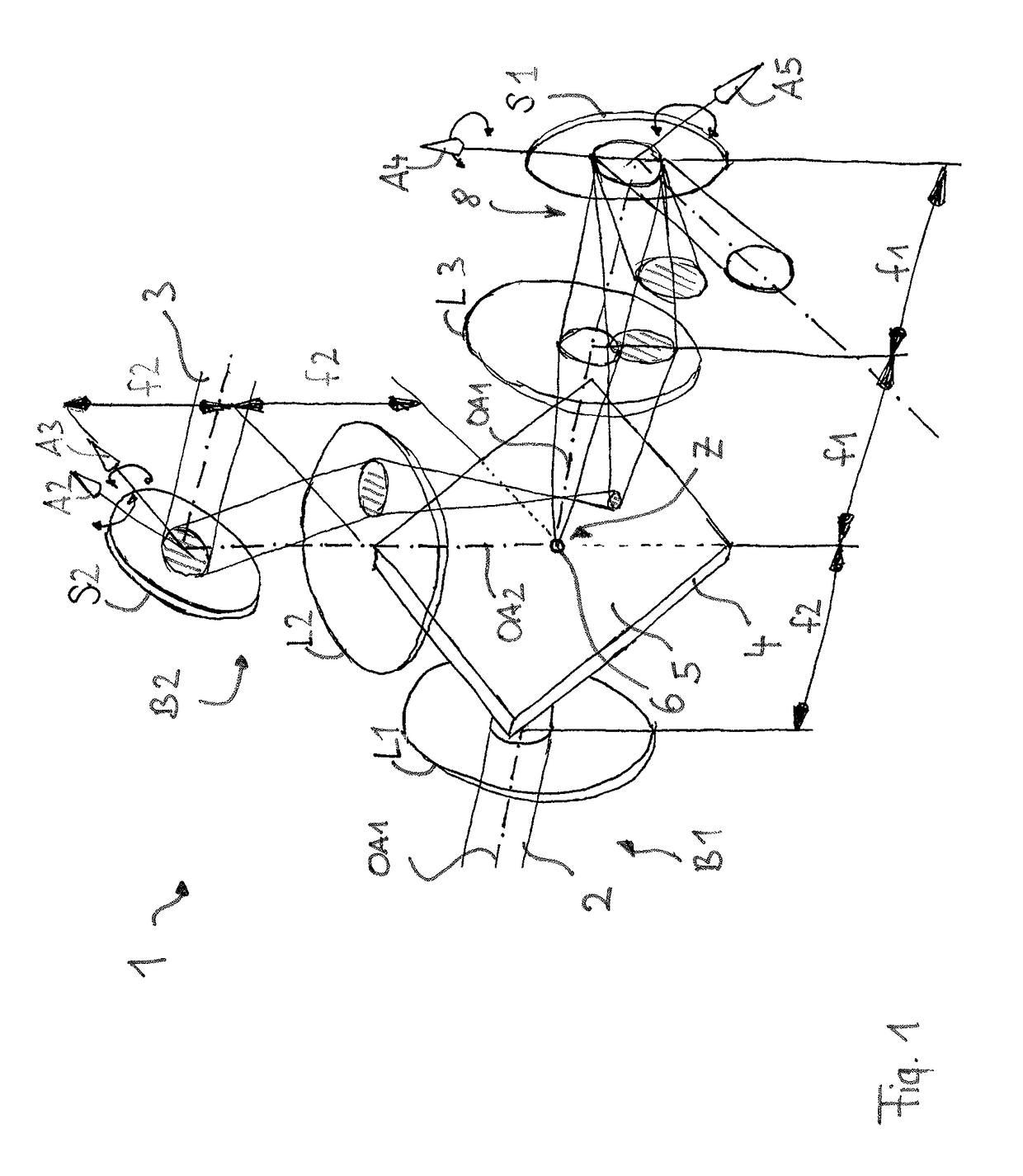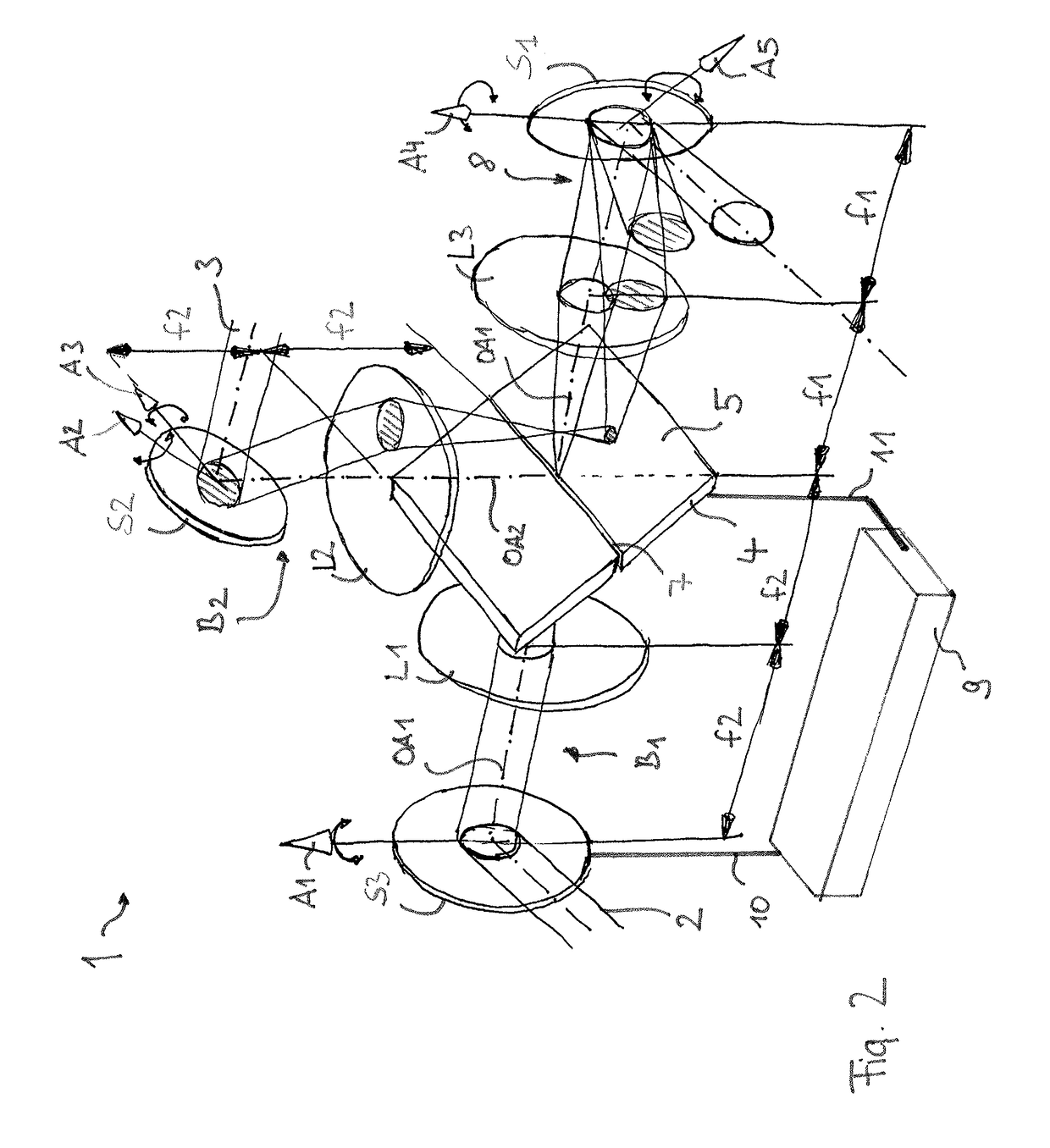Beam combiner for combining two independently scanned illuminating beams of a light scanning microscope
a beam combiner and light scanning microscope technology, applied in the field of beam combiner for combining two illuminating beams of light scanning microscope, can solve problems such as damage to the detector of laser scanning microscop
- Summary
- Abstract
- Description
- Claims
- Application Information
AI Technical Summary
Benefits of technology
Problems solved by technology
Method used
Image
Examples
Embodiment Construction
[0026]In describing preferred embodiments of the present invention illustrated in the drawings, specific terminology is employed for the sake of clarity. However, the invention is not intended to be limited to the specific terminology so selected, and it is to be understood that each specific element includes all technical equivalents that operate in a similar manner to accomplish a similar purpose.
[0027]FIG. 1 diagrammatically shows a beam combiner 1 which is configured for use in a light scanning microscope. The beam combiner 1 combines a first illuminating beam, which may be represented by an excitation beam 2, with a second illuminating beam, which in the described embodiment may be a manipulation beam 3. For clearer distinction, the cross-section of the manipulation beam 3 is cross-hatched in the illustration of FIG. 1. The beam combiner 1 is configured in such a way that the first and second illuminating beams are provided as parallel beam bundles. The excitation beam 2 is gui...
PUM
 Login to View More
Login to View More Abstract
Description
Claims
Application Information
 Login to View More
Login to View More - R&D
- Intellectual Property
- Life Sciences
- Materials
- Tech Scout
- Unparalleled Data Quality
- Higher Quality Content
- 60% Fewer Hallucinations
Browse by: Latest US Patents, China's latest patents, Technical Efficacy Thesaurus, Application Domain, Technology Topic, Popular Technical Reports.
© 2025 PatSnap. All rights reserved.Legal|Privacy policy|Modern Slavery Act Transparency Statement|Sitemap|About US| Contact US: help@patsnap.com



